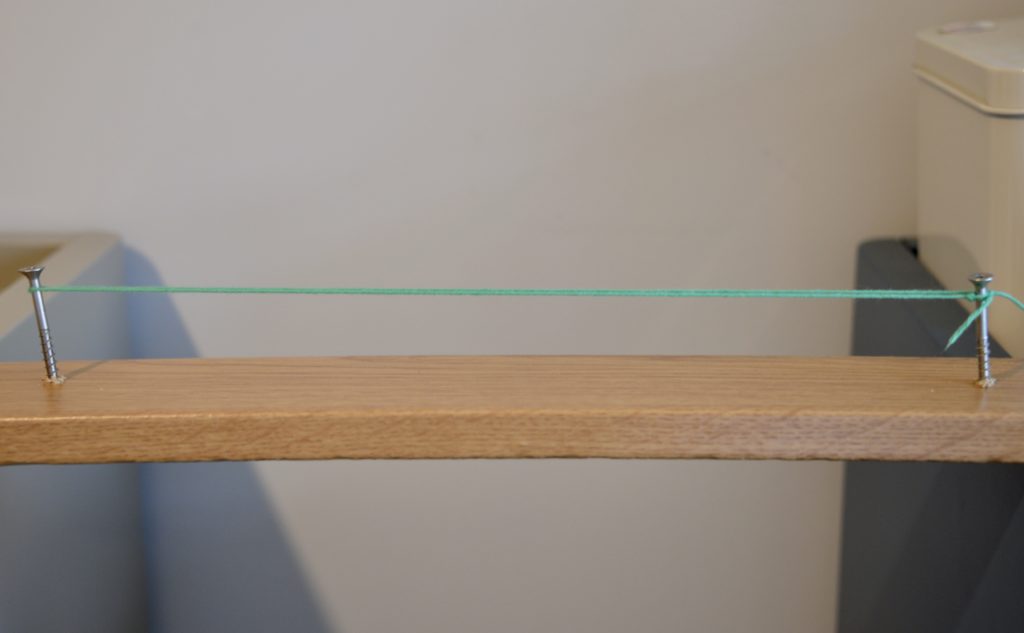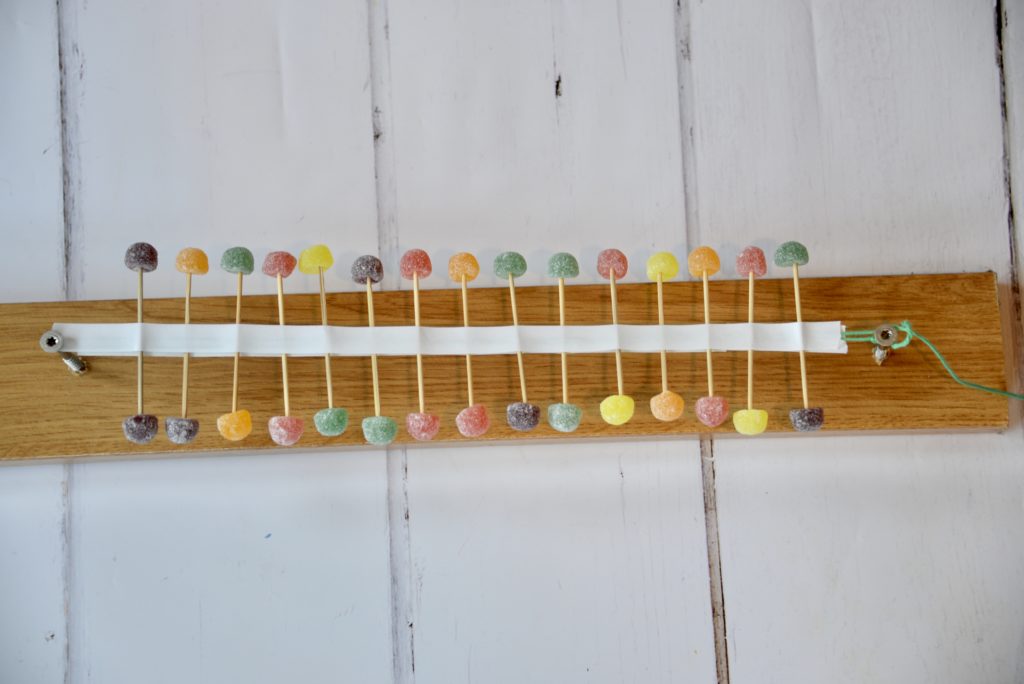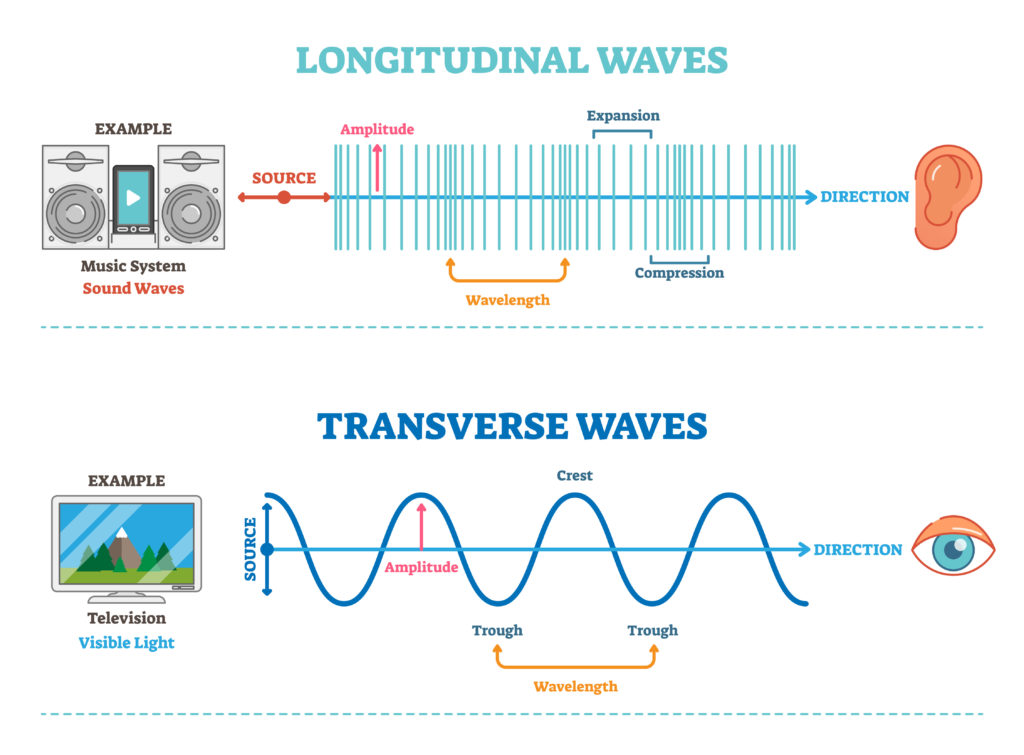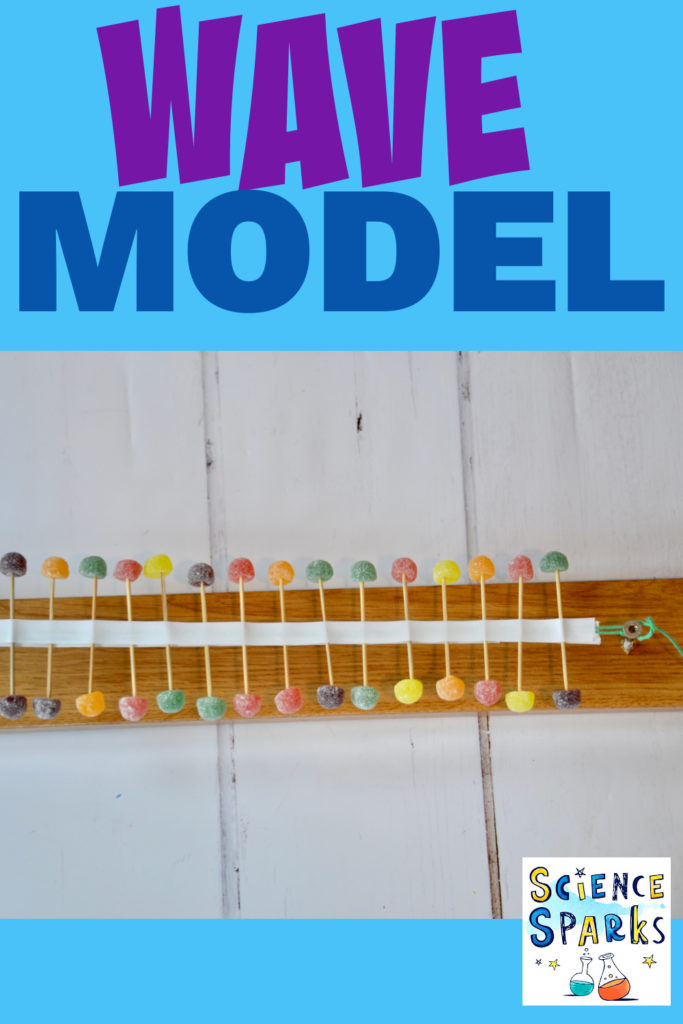This mini wave machine is a great way to demonstrate the concept of a wave! It’s easy to make, looks great and can be used over and over again!
What is a wave?
When you imagine a wave do you think of rolling waves in the sea? Radio waves or sound waves flying through the air? Or light travelling from the sun?
Waves are all around us all the time.
Waves transfer energy and information without the transfer of matter.
Waves can be transverse or longitudinal. This mini wave model is a great demonstration of a transverse wave.
Make a Mini Wave Machine
A block of wood around 30cm long
2 screws
Drill or screwdriver
String
Toothpicks
Tape
Jelly tots or other small sweet
Instructions
Carefully drill a screw into the wood at each end. Ask an adult to help.
Tie string as tightly as you can around each screw so you make two parallel lines with the string.

Place a strip of tape underneath the string.
Add toothpicks at regular intervals along the tape and secure with more tape over the top.
Place jelly tots or other small sweets on the ends of the toothpicks.

Push down on one jelly tot and watch as the ripple travels to the end of the model and back.

This wave model shows a transverse wave.
What is a transverse wave?
Transverse waves have vibrations perpendicular to the direction of travel of the wave.
Another way to show this movement is to wiggle a spring or a slinky up and down.
All electromagnetic waves are transverse waves.
What is a longitudinal wave?
In a longitudinal wave the vibrations are parallel to the direction of travel, they squish up and the stretch out again.
Longitudinal waves can also be demonstrated using a spring if you push one end and watch the ripple!
Examples of longitudinal waves are sound waves

Things to note – wave model
The disturbance of the toothpicks travels from one end of the model to the other end and back, but the toothpicks and jelly tots themselves do not move along the string. When waves travel through a medium such as air, the air particles vibrate and transfer energy but stay in the same place like the jelly tots.
Increase the amplitude of the wave by pushing the first toothpick down further.
Increase the speed of the wave by taking the jelly tots off, and slow it down by adding heavier sweets!

Last Updated on March 24, 2022 by Emma Vanstone

Leave a Reply